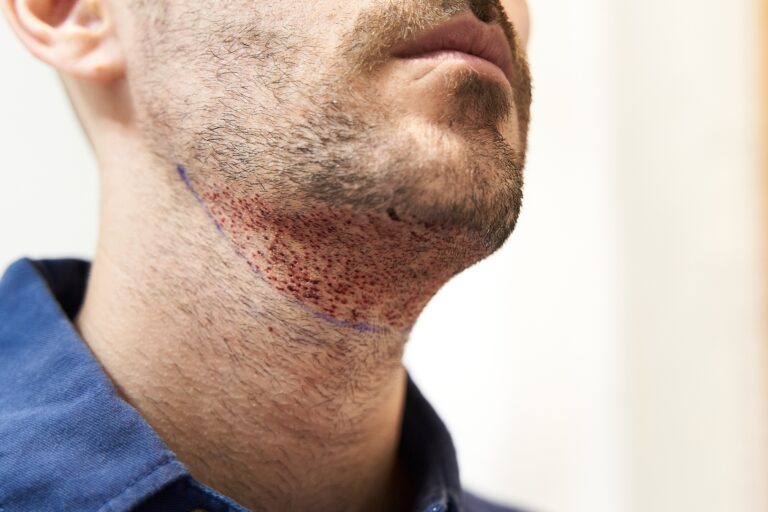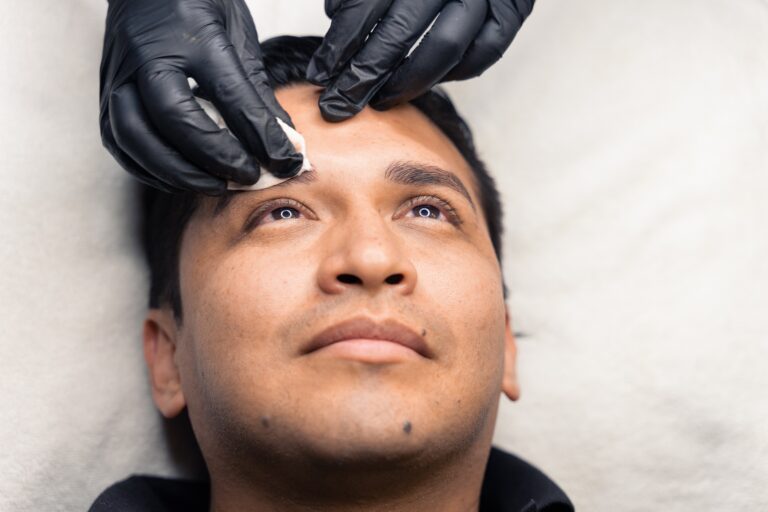Hair Transplants for Women: All You Need to Know (Costs and More)
Hair loss is a medical condition that’s mostly associated with men, but did you know it happens to a lot of women too? In fact, around 50% of women encounter hair loss at some point in their lives.
Luckily, scientific advancements have come up with various hair transplantation techniques that can work for both men and women. Here’s all you need to know about hair transplants for women.
Female Hair Restoration: Different Procedures of Hair Transplant for Women
Most people often associate hair loss issues with men, but women actually take up a considerable percentage of Americans struggling with hair loss. While it’s a condition that affects all genders, it can be extra devastating for a woman’s self-esteem and overall well-being.
Hair loss in women usually occurs at 40, but in rarer cases, it can happen as early as post-puberty. Since people have a preconceived notion that hair loss isn’t life-threatening, the psychological damages of such conditions are often overlooked.
Thankfully, as we further progress with breaking gender stigmas and scientific advancements, more hair transplant surgeries and treatments have become available. As of today, the two most popular hair transplantation techniques are:
- FUT (Follicular Unit Transplantation): Cutting a strip of skin from the donor areas and extracting its hair follicles
- FUE (Follicular Unit Extraction): Taking individual hair follicles directly from the donor areas rather than cutting a strip
What Are the Different Hair Loss Medications for Women?
Apart from the actual surgical procedures, there are a few medications women can use to reduce or prevent further loss of hair. These are some of the most popular prescribed treatments:
- Minoxidil (Rogaine)
- Estrogen and progesterone pills or creams
- Finasteride (Propecia or Proscar)
- Androgen receptor inhibitors
- Oral contraceptives
- Cyproterone acetate with ethinyloestradiol (Diane 35 or Diane 50)
- Ketoconazole (Nizoral)
How Does a Female Hair Transplant Work?
Depending on the severity of a woman’s hair loss or the doctor’s prescription, a hair transplant procedure can be accompanied by certain medications after surgery. The surgical procedure itself depends on what hair transplantation technique was used.
With an FUT transplant, a strip of skin will be cut from your donor areas using a scalpel. After extracting the hair follicles from the strip, the surgeon will prepare them for transplantation to your balding areas.
On the other hand, an FUE transplant uses a micro punch tool to extract the hair follicles directly from the donor area. After extraction, the surgeon will make tiny incisions where the hair is thinning to insert the hair follicles.
How Long Does the Procedure Take?
An FUE hair transplant procedure generally lasts longer than an FUT. Additionally, FUTs can be accomplished in a single surgical procedure, while FUEs need multiple sessions to finish.
Undergoing an FUT surgery can take anywhere between four to eight hours. After surgery, patients usually recover between 10 to 12 days, and the results start to become visible after 9 to 12 months.
As for an FUE surgery, you’ll need to go through several days of surgical procedures, with at least two to four hours per session. Recovery time for patients usually lasts for four to seven days. Similar to FUT, the results appear after 9 to 12 months.
It’s worth noting that you may experience additional hair loss in the transplanted area within a few weeks or months after surgery. This sudden hair loss is an expected behavior, as the body’s experiencing shock from the surgery.
The hair loss should recover shortly after a few more months.
How Long Do Hair Transplants Last?
Going through a hair transplant surgery isn’t a decision you can settle on a whim. You must consider the needed budget, permanence, and if you’re safe to undergo such a medical procedure.
With that said, people often ask how long do hair transplants last. Luckily, the results of modern hair transplantation techniques are permanent, thanks to the continuous scientific developments in the specific field.
After the surgery, your body needs time to heal and recover before the results become visible. Once you’re through the healing process, you’ll be rewarded with fuller and more natural-looking hair that’s long-lasting.
Since the transplanted hair follicles are from your own scalp, they would grow normally as in their previous location. However, it can stop growing as you grow older, just like with any other hair.
Are Hair Implants for Women Effective?
Hair implants for women can be effective as long as there’s enough healthy hair from the donor area to transplant where needed. Although, it’s worth mentioning fewer women have the type of balding issues suitable for hair transplantation than men.
Female pattern baldness often causes diffuse hair loss, which means hair thinning occurs in all areas of the head. These spots can include what men consider as donor areas in their case.
As such, the effectiveness of hair transplant surgeries depends on how healthy a woman’s donor area is. Donor areas include the following:
- The scalp area (particularly at the back of the head)
- Above the ears
- The nape of the neck
What Is the Female Hair Transplant Success Rate?
Female hair transplants often yield a high success rate of 95 to 100%. However, the procedure’s success rate depends on how fitting the candidate is, the surgeon’s level of expertise, and the patient’s lifestyle before and after the surgery.
Not every woman with hair loss is automatically fit for a hair transplant surgery. That’s why it’s important to discuss every detail of your hair loss and medical history with your trusted doctor to ensure the best and most appropriate method.
These are some examples of women who make good candidates for such a medical procedure:
- Women who have mechanical or traction alopecia (non-hormonal)
- Women with healthy donor areas
- Women who have alopecia marginalis (similar to traction alopecia)
- Women who suffered trauma-related hair loss (accidental scarring, burn victims, and chemical burns)
- Women with female pattern baldness
How Much Does a Female Hair Transplant Cost?
If you’re considering getting a hair transplant, you might need to brace yourself for the total costs of the procedure and possible medications. While it depends on how much hair you’ll need for transplantation, you can expect prices to start anywhere between $4,000 to $15,000.
Surgeons may also prescribe medications for post-surgery pain, preventing infections, and future hair loss. These are the usual aftercare treatments and their estimated prices:
- Tylenol with codeine or ibuprofen (roughly $10 for 15 tablets)
- Cephalexin or erythromycin (around $11 for four capsules)
- Medrol Dosepak ($16 for 21 tablets)
- Minoxidil ($30 to $40)
- Finasteride (around $12 for 30 tablets)
What Causes Hair Loss in Women?
While it’s normal for humans to shed 50 to 100 hair strands a day, some women go beyond this balance. Hair loss occurs when women lose more than the expected daily hair count, and there’s not much growth to support or restore it.
Although hair loss in women is almost unavoidable between the ages of 40 to 60, it can also happen at any age for various reasons. Here are some common hair loss causes for women:
- Family history of thinning hair
- Trauma caused by pregnancy
- Thyroid disorders
- Anemia
- Skin conditions (seborrheic dermatitis and psoriasis)
- Menopause
- Alopecia
Hair Plugs for Women: Do They Still Work?
Female hair restoration has come a long way from the traditional method of implanting hair plugs. Hair plugs were first performed in the 1950s and were the go-to treatment for severe cases of hair loss back then.
However, hair plugs are known to show results of unnatural-looking hair and a doll-like appearance. This outdated medical procedure also comes with some health disadvantages, such as:
- Infections
- Loss of sensation in the surgical area
- Folliculitis (inflamed hair follicles)
- Excessive bleeding in the surgical area
- Scalp pain and swelling
By the early 2000s, hair plugs have become obsolete. Hair transplantation techniques such as FUT and FUE became more viable and replaced the traditional ways of restoring hair.
Can Women Still Lose Hair After Having a Hair Transplant?
Anyone who’s undergone a hair transplant surgery is expected to experience some hair loss after a few weeks or months post-surgery. This temporary hair loss is caused by surgery shock, which is normal for most patients.
However, rarer instances can cause hair loss to progress further, even after having a hair transplant. Some of these reasons include the following:
- Improper surgery planning
- Nutrient deficiency
- An unhealthy lifestyle following the surgery
- Not following proper aftercare treatments and medications
- Old age
Hair transplants are known to yield permanent results, but this doesn’t include inevitable hair loss due to old age or an unhealthy lifestyle. That’s why it’s important to take good care of your health while young to maintain your hair’s youthful look while it lasts.
Final Thoughts
Hair loss issues are often overlooked due to how people don’t consider the psychological damage it can cause someone. At least it’s comforting to know women suffering from this medical condition have a few options to choose from.
Hair transplants offer a permanent solution to hair loss, but it doesn’t stop there. What matters most is how you discuss the procedure with a trusted doctor, so you’ll know the best approach for your specific needs.







